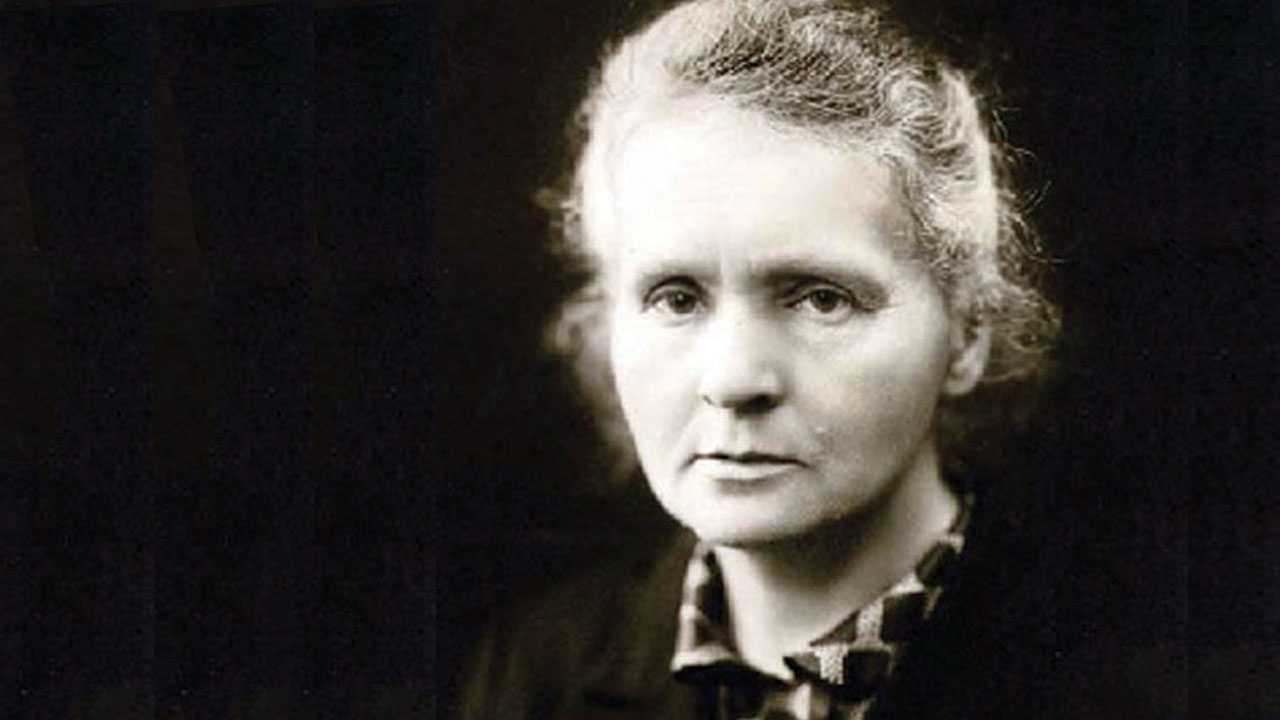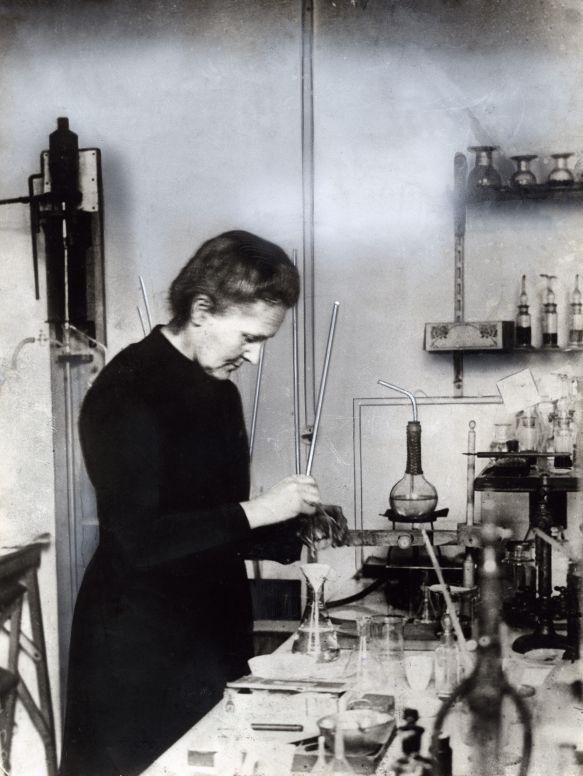Marie Curie

Marie Curie with a serious expression, surrounded by lab equipment
Biography
Born Maria Skłodowska in Warsaw in 1867, Marie Curie’s life was shaped by both intellectual ambition and political repression. Denied access to higher education in Russian-controlled Poland, she moved to Paris to study at the Sorbonne, surviving on little more than tea and determination. Her brilliance in physics and math opened the doors of sciencw. Doors she then held open for others.
Curie met and married Pierre Curie, a fellow scientist who became both her partner in research and her greatest collaborator. Together, they investigated the mysterious radiation emitted by uranium and discovered two new elements: polonium, named after Marie’s homeland, and radium, the more radioactive of the two. Their work changed the fundamental understanding of matter itself, showing that atoms were not immutable but energetic and dynamic.
In 1903, Marie Curie became the first woman to win the Nobel Prize, sharing the Physics award with Pierre and Henri Becquerel. When Pierre tragically died in 1906, Marie not only continued their research, but stepped into his teaching role, becoming the first female professor at the Sorbonne. Her second Nobel Prize, in Chemistry, followed in 1911 for the isolation of pure radium.
During World War I, Curie pivoted from theory to action. She developed mobile X-ray units, known as 'Petites Curies,' and trained over 150 women to operate them, bringing life-saving diagnostics to wounded soldiers at the front. The machines could peer inside the human body, but the dangers of radiation were not yet understood. Curie paid dearly for this knowledge, eventually dying from radiation-related illness in 1934.
Despite illness, grief, and systemic sexism, Curie never wavered in her belief that science could and should serve humanity. Her legacy is more than historical. It’s elemental. It pulses through cancer treatments, nuclear physics, and every young scientist who dares to ask, 'What if?'
Marie Curie transformed how we understand the atom, and what’s possible when people dare to defy limits. Her story shows us that courage and curiosity are the building blocks of a better future. She didn’t just make history, she made the future safer, smarter, and more just.
?
Why was Marie Curie’s discovery of radioactivity so revolutionary?
How did Curie’s work during World War I influence modern medicine?
What barriers did Curie break as a woman in science?
Why did she refuse to patent her work on radium?
How has her research on radioactive elements impacted cancer treatment?
What risks did Curie take in the pursuit of scientific knowledge?
How did her upbringing in Poland shape her values and work ethic?
Dig Deeper
Marie Skłodowska Curie’s revolutionary research laid the groundwork for our understanding of physics and chemistry, blazing trails in oncology, technology, medicine, and nuclear physics, to name a few.
Discover more

Mary Anning
Discovered the first complete Ichthyosaurus, Plesiosaurus, and Pterosaur fossils, making her one of the founding figures of paleontology.

Albert Einstein
Albert Einstein didn't just rewrite the rules of physics, he redrew the entire board.

Nikola Tesla
Nikola Tesla didn't just light up the world, he electrified the imagination.
Further Reading
Stay curious!
